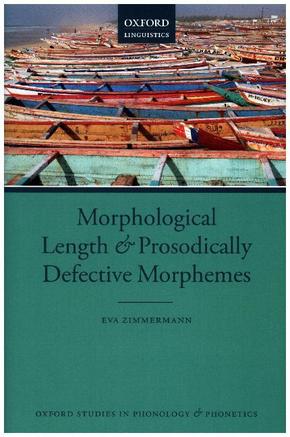
Morphological Length and Prosodically Defective Morphemes
| Verlag | Oxford University Press |
| Auflage | 2017 |
| Seiten | 368 |
| Format | 17,9 x 24,1 x 2,4 cm |
| Print PDF | |
| Gewicht | 670 g |
| Artikeltyp | Englisches Buch |
| Reihe | Oxford Studies in Phonology and Phonetics 1 |
| ISBN-10 | 0198747322 |
| EAN | 9780198747321 |
| Bestell-Nr | 19874732EA |
This book examines specific sound changes that cannot be explained by phonological means alone but crucially rely on morphological information. It offers a unified theoretical account of these phenomena as well as a rich database of attested patterns in the world's languages.
This book investigates the phenomenon of morphological length manipulation: changes in segmental length that cannot be explained by phonological means alone but crucially rely on morphological information. Eva Zimmermann provides a unified theoretical account of these phenomena by taking into account all possible prosodically defective morpheme representations and their potential effects on the resulting surface structure. Data are drawn from a wide range of the world's languages, including Aymara, Yine, Upriver Halkomelem, Wolof, Hungarian, Tohono O'odham, and Southern Sierra Miwok, providing a through representative database of morphological length manipulation patterns in the languages of the world. The author demonstrates that alternative accounts suffer from significant problems of both under- and over-generation when tested against the full range of attested phenomena. The volume will be of interest to all researchers and graduate students working in theoretical phonology an d morphology.
Inhaltsverzeichnis:
1: Introduction
2: The theory of Prosodically Defective Morphemes
3: Subtractive MLM and Prosodically Defective Morphemes
4: Prosodically Defective Morphemes and blocking
5: Morpheme contiguity
6: The complete empirical picture of MLM and the linearization of morphemes
7: A critical review of alternative accounts
8: Conclusion
References
Index
Rezension:
The theory presented in this book deserves to become influential because it provides the most comprehensive and constrained theoretical account of subtractive morphology ... In terms of the analysis of additive prosodically defective morphemes, it is probably the most complete work on the subject, with the most extensive evidence. Paul de Lacy, Morphology
